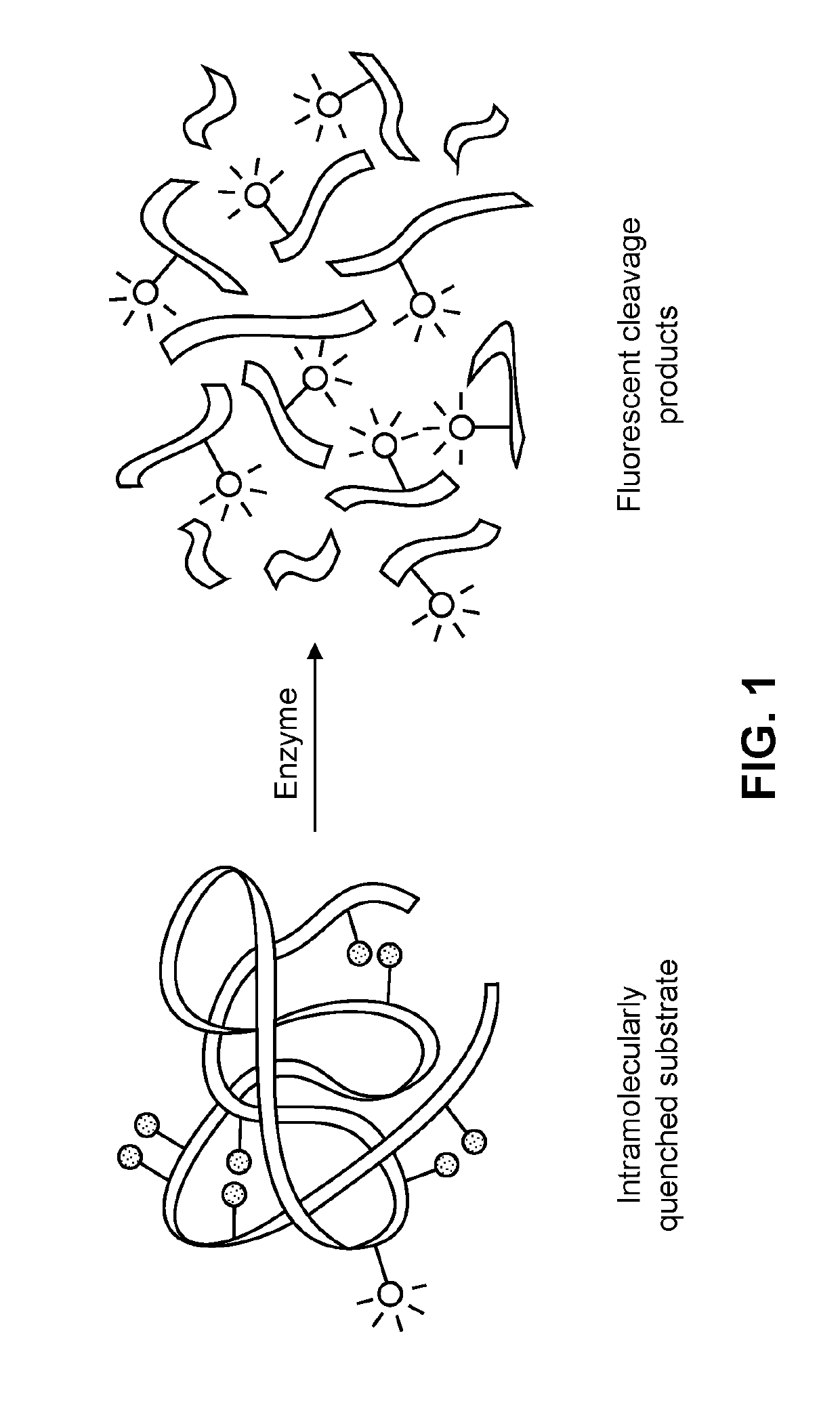Phage-based detection method for antimicrobial susceptibility testing and identification of bacterial species
a technology of susceptibility testing and phages, which is applied in the field of phage-based detection methods for antimicrobial susceptibility testing and identification of bacterial species, can solve the problems of compromising the overall effectiveness of antibacterial therapy, presenting new public health problems, and affecting the effectiveness of drugs, so as to achieve less cost, less drug resistance, and convenient use.
- Summary
- Abstract
- Description
- Claims
- Application Information
AI Technical Summary
Benefits of technology
Problems solved by technology
Method used
Image
Examples
example 1
Construction of Recombinant Bacteriophage for Expression of Heterologous Marker
[0220]In this study, a molecule (marker) that is not naturally produced by target cells or by the phage vector or by the bacterium-infected host is prepared, followed by specific detection of the heterologous molecule (marker).
[0221]Construction of a Recombinant Bacteriophage:
[0222]A recombinant bacteriophage is constructed by inserting a DNA sequence encoding for the heterologous marker into a strongly expressed region of the phage genome downstream of the nucleic acid sequence encoding the capsid protein (cps) via homologous recombination mediated by a recombinant plasmid. A strong promoter, located upstream of cps, is selectively activated in the course of the expression of the bacteriophage genome following infection, producing many copies of the corresponding mRNA transcripts. Construction of the recombinant bacteriophage is accomplished using a fusion product of the nucleic acid encoding a reporter,...
example 2
Creation of Recombinant Bacteriophages Using DNA Transposition
[0229]A bacteriophage containing a heterologous reporter nucleic acid is constructed using the commercially available EZ::TN™ transposase system (Epicenter Technologies, Madison, Wis.) as described in Goryshin et al., J. Biol. Chem., 273(13):7367-7374, 1998. Then, the terminally ME-bound EZ::TN™ transposome is electrotransformed into an electrocompetent E. coli K1strain (ATCC strain 23503). The strain is made electrocompetent by growing to an optical density (OD) of 0.8 at 37° C. in LB media, followed by several washes in 15% glycerol. Electrotransformation is accomplished using the BIORAD GENE PULSER available from Bio-Rad Laboratories (Hercules, Calif.).
[0230]The transformed E. coli K1strain is infected with native type K1-5 bacteriophage. The transformed bacteria are grown to an OD of 0.4 at 37° C. in LB-ampicillin media. Bacteriophage K1-5 is added at a multiplicity of infection of approximately 1 bacteriophage per 10...
example 3
Screening Samples Obtained from a Subject Using Recombinant Bacteriophage
[0232]A subject (e.g., a human patient) exhibiting symptoms of bacterial infection (for example, fever, headache, abdominal pain, and nausea) is identified, and at least one of the following samples are collected from the subject: a 0.01 mL cerebrospinal fluid (CSF) sample, a 1.0 mL sputum sample, and a 1.0 mL blood sample. When all three of the samples are collected, each sample is diluted with 4.0 mL of LB broth, thus promoting growth of all bacteria present in the respective sample, and is incubated at 37° C. for 4 hours. After incubation, each sample is distributed by 100 μL aliquots into 30 wells of a 96-well plate. Aliquots of the blood sample are added to wells 1-30, aliquots of the CSF sample are added to wells 31-60, and aliquots of the sputum sample are added to wells 61-90. Wells 91-93 serve as positive controls, and wells 94-96 serve as negative controls. When simultaneously screening for susceptibi...
PUM
| Property | Measurement | Unit |
|---|---|---|
| Color | aaaaa | aaaaa |
| Acidity | aaaaa | aaaaa |
| Spectroscopic properties | aaaaa | aaaaa |
Abstract
Description
Claims
Application Information
 Login to View More
Login to View More - R&D
- Intellectual Property
- Life Sciences
- Materials
- Tech Scout
- Unparalleled Data Quality
- Higher Quality Content
- 60% Fewer Hallucinations
Browse by: Latest US Patents, China's latest patents, Technical Efficacy Thesaurus, Application Domain, Technology Topic, Popular Technical Reports.
© 2025 PatSnap. All rights reserved.Legal|Privacy policy|Modern Slavery Act Transparency Statement|Sitemap|About US| Contact US: help@patsnap.com

